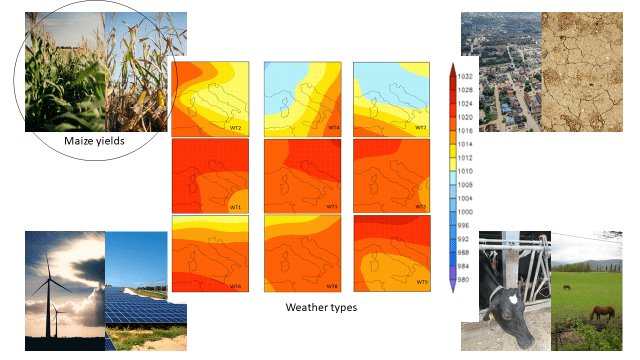Applicability of circulation regimes and weather types as predictor of maize yields in Veneto (Italy)
The paper “Linking maize yields in Veneto Italy, to large-scale atmospheric variability, circulation regimes and weather types“, published in The Journal of Agricultural Science, has been chosen as the latest Editorial Highlight and is freely available to download for one month.
The climate is able to affect a large part of human activities, especially agricultural and livestock but also the production of energy and the frequency of intense meteorological phenomena and therefore civil protection activities. The weather types classification and large scale model climate variability, represent an excellent tool for describing climate variability. In this paper the authors verified the correlation between these climate indices and the maize yields in Veneto, a region located in NE Italy (Figure 1).

These large scale indices result to be considerably related to atmospheric circulation regimes and associated weather types and consequently they have an impact on temperature and precipitation patterns in Italy and consequently on yields of maize crops. In general, the authors highlighted both temperature and precipitation showed correlation elements with maize yields in Veneto. Negative anomalies of precipitation were the driver of yield losses, especially in correspondence to stem elongation, flowering and grain filling stages. In addition, above average temperature during the summer period, and generally coupled to low precipitation, had negative impact on the same vegetative phases. The improvement of atmospheric circulation predictability (seasonal forecasts), coupled to similar approaches as the one presented in this study, would allow to predict crop yield trends in advance. This kind of of tool could represent an effective strategy for farmers to anticipate adverse climatic conditions and reduce yield losses, for example changing the specie according to the conditions foreseen for the following months. Likewise, similar tools can provide information for policymakers about climatic risks and the need to arrange supporting actions following extreme events. Similar studies to that shown in this paper can therefore also be used in other application fields such as zootechnics, energy, civil protection, human health protection, etc. Furthermore, taking into consideration different future climatic scenarios, could allow to obtain indications on the climatic impacts on various activities in the coming decades.
The Journal of Agricultural Science Editorial Highlights are selected by the Editor-in-Chief and are freely available for one month. View the recent selections here.






